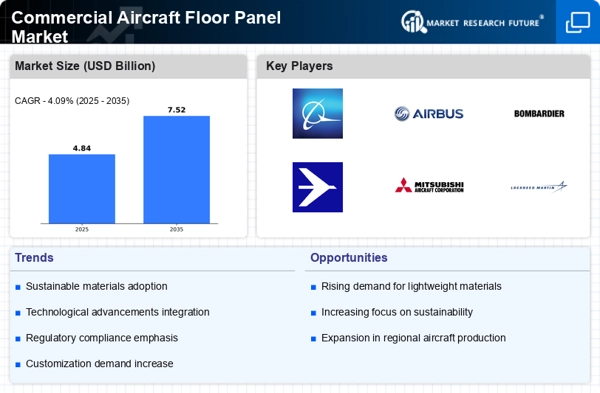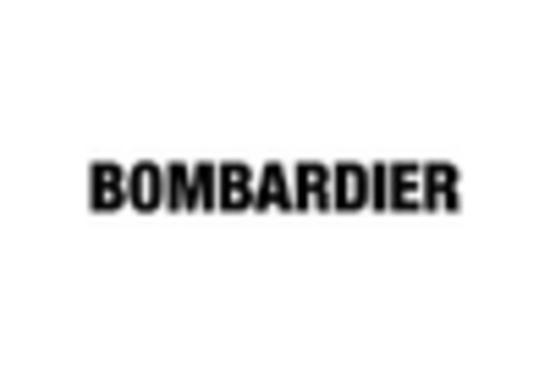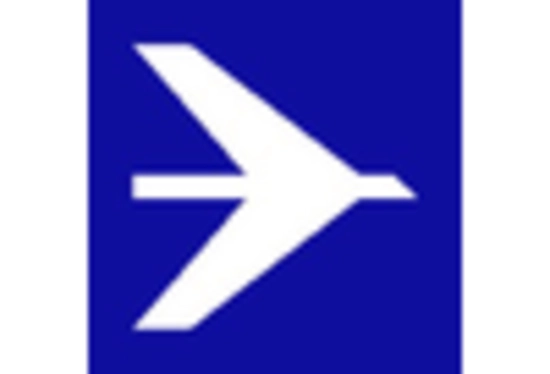Increasing Air Travel Demand
The Commercial Aircraft Floor Panel Market is experiencing a surge in demand due to the increasing number of air travelers. As more individuals opt for air travel, airlines are expanding their fleets to accommodate this growth. According to recent data, the number of air passengers is projected to reach 8.2 billion by 2037, which indicates a robust growth trajectory for the aviation sector. This rise in passenger numbers necessitates the production of more aircraft, thereby driving the demand for floor panels. Additionally, airlines are focusing on enhancing passenger comfort and safety, which further propels the need for high-quality floor panels that meet stringent regulatory standards. Consequently, manufacturers in the Commercial Aircraft Floor Panel Market are likely to invest in innovative materials and designs to cater to this growing demand.
Focus on Passenger Experience
Enhancing passenger experience is a key driver in the Commercial Aircraft Floor Panel Market. Airlines are increasingly investing in cabin upgrades to provide a more comfortable and enjoyable travel experience. This includes the installation of high-quality floor panels that contribute to the overall aesthetics and functionality of the cabin. Research indicates that airlines that prioritize passenger comfort can achieve higher customer satisfaction and loyalty, which is crucial in a competitive market. As a result, there is a growing demand for floor panels that not only meet safety standards but also offer design flexibility and customization options. This trend suggests that manufacturers who can provide aesthetically pleasing and functional floor panel solutions are likely to gain a competitive edge in the Commercial Aircraft Floor Panel Market.
Technological Innovations in Materials
Technological advancements in materials science are playing a pivotal role in shaping the Commercial Aircraft Floor Panel Market. The introduction of lightweight, durable materials such as carbon fiber reinforced polymers and advanced composites is revolutionizing the design and functionality of floor panels. These materials not only reduce the overall weight of the aircraft, leading to improved fuel efficiency, but also enhance the structural integrity of the panels. As airlines increasingly focus on operational efficiency and sustainability, the demand for innovative materials is likely to grow. Furthermore, the integration of smart technologies into floor panel designs, such as sensors for monitoring wear and tear, is expected to become more prevalent. This shift towards advanced materials and technologies presents a significant opportunity for manufacturers in the Commercial Aircraft Floor Panel Market to differentiate their offerings.
Sustainability and Eco-Friendly Practices
Sustainability is becoming an increasingly important consideration in the Commercial Aircraft Floor Panel Market. As environmental concerns rise, airlines are seeking to adopt eco-friendly practices, including the use of sustainable materials in aircraft manufacturing. This shift is driven by regulatory pressures and consumer demand for greener travel options. Manufacturers are responding by developing floor panels made from recycled or bio-based materials, which can significantly reduce the environmental impact of aircraft production. Additionally, the focus on sustainability is likely to influence the entire supply chain, prompting manufacturers to adopt more sustainable practices in their operations. This trend not only aligns with The Commercial Aircraft Floor Panel Industry.
Regulatory Compliance and Safety Standards
The Commercial Aircraft Floor Panel Market is significantly influenced by stringent regulatory compliance and safety standards imposed by aviation authorities. These regulations are designed to ensure the safety and reliability of aircraft components, including floor panels. For instance, the Federal Aviation Administration (FAA) and the European Union Aviation Safety Agency (EASA) have established guidelines that manufacturers must adhere to. Compliance with these regulations often requires the use of advanced materials and manufacturing processes, which can enhance the performance and durability of floor panels. As airlines prioritize safety and seek to avoid costly penalties, the demand for compliant floor panels is expected to rise. This trend indicates a potential growth area for manufacturers who can provide products that not only meet but exceed regulatory requirements in the Commercial Aircraft Floor Panel Market.


















Leave a Comment